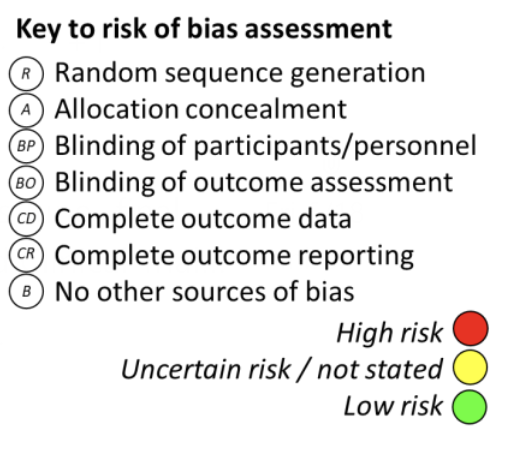
ISN Academy: Peritoneal Dialysis
Treating constipation to prevent peritonitis: is senna superior?
Comparative effectiveness of lactulose and sennosides for the prevention of peritoneal dialysis-related peritonitis: an open-label, randomized, active-controlled trial
Noppakun et al. Ann Med. 2021. DOI: https://www.ncbi.nlm.nih.gov/pmc/articles/PMC7894424/
Summary: One hundred adults on peritoneal dialysis (PD) were randomised in an open label fashion to lactulose or sennosides, which were then titrated to effect based on bowel motion frequency. There was no statistically significant difference in the incidence of bacterial PD peritonitis between the two interventions at one year (0.45 episodes per patient-year [95% CI, 0.26-0.75] with lactulose versus 0.19 episodes per patient-year in the sennosides group [95%CI 0.09-0.39], p=0.058). 38% in the lactulose vs 18% in the sennosides group developed the composite outcome of bacterial PD peritonitis and death from any cause (HR 2.77; 95% CI, 1.20-6.41, p=0.01). There was no difference in the type of organisms isolated from PD cultures between the two study arms. 10% of participants discontinued treatment (7% in lactulose group and 3% in the sennosides), due to diarrhoea.
Comment: Observational studies have correlated the presence of constipation with an increased risk of PD peritonitis, which is particularly relevant in a Thai population where gram-negative organisms are more common than the gram-positive predominance seen elsewhere. The authors found that the use of lactulose had a higher rate of PD peritonitis which bordered on significance (p=0.058) in this relatively small study. This safety signal warrants further study. The generalisability of these results outside a Thai context also needs consideration given their relatively young, single ethnicity population.
ISN Academy: Diabetes
Sotagliflozin shows a potential benefit in patients with type 2 diabetes mellitus and severe renal impairment
Efficacy and safety of sotagliflozin in patients with type 2 diabetes and severe renal impairment
Cherney et al. Diabetes Obes Metab 2021. DOI: 10.1111/dom.14513
Summary: In this phase 3, multicentre trial 277 patients with type 2 diabetes mellitus and stage 4 chronic kidney disease (CKD) were randomly assigned in 1:1:1 ratio to treatment with either sotagliflozin 400 mg, sotagliflozin 200 mg or placebo. The primary endpoint of the difference in HbA1c reduction between placebo and sotagliflozin 400 mg at week 26 was not significant at –3 mmol/mol (95% CI –7 to 0.6; p=0.096), although this difference reached significance by week 52 (–8 mmol/mol, 95% CI –13 to –3, p=0.003) in favour of sotagliflozin. The proportion of patients who achieved target HbA1c level of <53 mmol/mol (<7.0%) at weeks 26 and 52 was significantly higher in the sotagliflozin 400 mg (17.4% and 20.7%) and 200 mg groups (16.3% and 19.6%) than in the placebo group (4.3% and 4.3%). There was no difference in the incidence of adverse events, including adverse events leading to discontinuation. Fewer cardiovascular events occurred in the sotagliflozin groups (7/184) than with placebo (12/93). Despite a small acute reduction in eGFR in the sotagliflozin groups, there was no difference in change in eGFR at 52 weeks between groups (-2.0 ± 0.7, -2.2 ± 0.7, and -2.2± 0.7 ml/min/1.73m2 in the placebo, 200mg, and 400mg groups respectively).
Comment: Achieving glycaemic control and target HbA1c levels in patients with type 2 diabetes mellitus and stage 4 CKD is challenging. Sotagliflozin induced a statistically significant reduction in HbA1c level at week 52, but not at week 26 compared to placebo. The trial also showed that patients in sotagliflozin groups achieved HbA1c targets more commonly and required rescue therapy with insulin less frequently. The possible signal of beneficial effects for eGFR decline and cardiovascular events suggest that the benefits seen with sotagliflozin in the SCORED trial (NEJM 2021) with eGFR 25-60mL/min/1.73m2 may extend to those with lower levels of kidney function, although as secondary endpoints in this small study, any conclusions from these results would be speculative. The trial was limited by loss to follow up of 28% of participants by 52 weeks. Despite a failure to achieve the primary endpoint, these data suggest a potential for a broader use of sotagliflozin in patients with eGFR between 15 and 30ml/min/1.73m2 and scope for further study.
ISN Academy: Hemodialysis
High vs Low dialysate sodium in hospitalised hemodialysis patients: No difference in hemodynamics
A randomized controlled trial of two dialysate sodium concentrations in hospitalized hemodialysis patients
McCausland et al. Nephrol Dial Transplant 2021. DOI: 10.1093/ndt/gfab329
Summary: 139 hospitalised maintenance hemodialysis patients were randomised to receive either a high sodium (142mmol/L) or low sodium (138mmol/L) dialysate for up to six sessions. The primary outcome was the average decline in systolic blood pressure (SBP) within each treatment session, defined as the pre-dialysis blood pressure minus the lowest intradialytic SBP. There was no significant difference in this outcome for higher versus lower dialysate sodium (23 ±16mmHg vs. 26 ±16 mmHg; p=0.57). Hemodialysis with a higher dialysate sodium did not change the proportion of sessions complicated by intradialytic hypotension (54% vs 59%, odds ratio 0.72 [95% CI 0.36 to 1.44]), the mean patient symptom score (3.3 vs 3.1, p=0.59), or the number of adverse events, compared to hemodialysis with a lower dialysate sodium. Due to notable imbalances in baseline characteristics with regards to sex, history of heart failure, pre-hemodialysis weight and systolic BP, a post hoc multivariable mixed effects model was performed which showed that higher dialysate sodium was associated with a 7.7mmHg smaller average decline in SBP compared with lower dialysate sodium (95% CI -13.4 to -1.9mmHg).
Comment: This study assesses the impact of dialysate sodium in a hospitalised cohort who are potentially at higher risk of hemodynamic instability, a complication associated with morbidity and mortality. The strict inclusion/exclusion criteria and single centre location limit its generalizability to other settings. The results suggest that there is no difference in decline in SBP, intradialytic hypotension, adverse events, and symptom scores between high or low dialysate sodium in hospitalised patients on maintenance hemodialysis. However, these results are limited by significant between-group imbalances in important baseline characteristics resulting in potential confounding. The post hoc analysis alludes to possible benefits of a higher dialysate sodium however a larger scale trial with a pre-specified analysis plan is needed. A large pragmatic outpatient clinical trial is currently underway (RESOLVE – NCT0282382) which will explore dialysate sodium effects on major adverse cardiovascular outcomes including all-cause death.
ISN Academy: Hypertension
Chlorthalidone proves effective for blood pressure reduction in stage 4 CKD
Chlorthalidone for Hypertension in Advanced Chronic Kidney Disease
Agarwal et al. N Eng J Med 2921. DOI: 10.1056/NEJMoa21
Summary: 160 patients with stage 4 CKD (mean eGFR 23.3mL/min/1.73m2 ) and poorly controlled hypertension were randomised to either chlorthalidone (titrated to a maximum dose of 50mg per day) or placebo. Chlorthalidone resulted in a 11.1mmHg improvement in 24 hours blood pressure from baseline to 12 weeks (95% CI −13.9 to −8.1mmHg) compared to a 0.5mmHg improvement with placebo (95% CI −3.5 to 2.5mmHg), adjusted for the use of loop diuretics at baseline. By 12 weeks, the urinary albumin-to-creatinine ratio fell by 52% with chlorthalidone compared to 4% for placebo (mean 50% percentage point difference, 95%CI 37 to 60 percentage points). Chlorthalidone was associated with a higher risk of hypokalaemia (10% vs 0%), elevated serum creatinine (45% vs 13%), hyperglycaemia (16% vs 5%), hyperuricemia (20% vs 9%) and dizziness (25% vs 16%). There was a reduction in eGFR with chlorthalidone use, with a change in eGFR from baseline to 4 weeks of -2.7mL/min/1.73m2 compared to no change with placebo, but by 2 weeks after completion of the intervention the eGFR change from baseline was – 0.3mL/min/1.73m2 with chlorthalidone compared to -0.5mL/min/1.73m2 with placebo (between-group difference, 0.2 ml/min/1.73 m2 ; 95% CI −1.0 to 1.4). Over 3 years there were fewer patients whose eGFR fell below 10mL/min/1.73m2 with chlorthalidone (20 patients vs 29 patients) although the difference was not statistically significant.
Comment: This well-conducted study provides robust support for the use of chlorthalidone in patients with advanced CKD, demonstrating substantial blood pressure improvements despite this class of medications often being avoided in this patient population. The magnitude of benefit is impressive considering that patients were already taking a mean of 3.4 antihypertensive medications at baseline, and 60% used loop diuretics. The reduction in albuminuria suggests a nephroprotective effect, although longer-term studies with larger sample size are likely needed to definitively assess kidney failure outcomes. The safety data reinforces that careful monitoring of fluid status and electrolytes is important. Study generalisability is reduced somewhat by the underrepresentation of women (22% of study population) and Asian (2%) or Hispanic (1%) patients. Comparison to other thiazides will be explored in the Diuretic Comparison Project (NCT02185417), although this study is not restricting to patients with CKD.
ISN Academy: Hemodialysis
Intradialytic neuromuscular stimulation may not improve markers of inflammation and quality of life
No effect of intradialytic neuromuscular electrical stimulation on inflammation and quality of life: a randomized and parallel design clinical trial
Marini et al. Sci Rep 2021. DOI: 10.1038/s41598-021-01498-7
Summary: In this open label randomised controlled trial, 21 adults established on hemodialysis for at least 3 months were randomly assigned to receive intradialytic neuromuscular electrical stimulation (NMES) for 40 minutes three times weekly (n=10) or standard care (n=11) for a month. At the end of the 6 weeks follow-up period NMES was associated with no improvement in markers of inflammation (high sensitivity CRP, IL-6, IL-10 and TNF alpha), quality of life (SF-36), muscle mass (bioimpedance analysis) or muscle strength (hand grip strength assessment), either compared to baseline or to standard care.
Comment: Reduced physical activity is prevalent amongst kidney failure patients and is associated with decreased quality of life, physical capacity, and longevity. Despite support for the role of NMES in other populations, evidence in those on dialysis is limited. The lack of demonstrated effect in the current study may in part be explained by the small sample size, short study duration and variations in the NMES protocol. In addition, the lack of data on other patient and dialysis characteristics including cause of original kidney disease and dialysis adequacy means it is unclear whether additional factors may have also impacted these measures of inflammation and quality of life.
ISN Academy: Hemodialysis
Lung ultrasound shows no clear advantage in managing dialysis fluid parameters
A randomized multicenter trial on a lung ultrasound–guided treatment strategy in patients on chronic hemodialysis with high cardiovascular risk
Zoccali et al. Kidney Int 2021. DOI: 10.1016/j.kint.2021.07.024
Summary: In this double-blind, placebo-controlled trial 160 patients with type 2 diabetes and urinary albumin-tocreatinine ratio (uACR) 30 to 300 mg/g were randomized to either colchicine 0.5 mg/day or placebo. All patients received ACE inhibitors or angiotensin receptor blockers for at least 3 months before enrolment. Over 36 months of follow up, the primary end-point of transition to overt nephropathy (uACR >300 mg/g) was registered in 51.4% patients in the colchicine group and in 54.1% patients in the placebo group (HR 1.07, 95% CI 0.68 to 1.67, p = 0.78). None of the patients developed doubling of serum creatinine, the need for renal replacement therapy or died of renal disease, and there were no significant differences in eGFR or uACR. However, the levels of markers of neutrophil-related chronic inflammation (NRCI), including C-reactive protein levels, neutrophil counts and neutrophil-to-lymphocyte ratio, were significantly lower in the colchicine group (all p < 0.05). The rates of adverse events were similar in both groups.
Comment: Type 2 diabetes mellitus is one of the most common causes of CKD worldwide. Previous clinical and experimental studies demonstrated strong associations between NRCI and diabetic kidney disease (DKD) occurrence and progression. However, this RCT showed that continuous NRCI suppression with colchicine does not prevent the progression of early DKD to overt nephropathy. The limitations of the study include relatively small sample-size and short follow-up, that could prevent the detection of long-term outcomes in both groups. In conclusion, the results of the trial do not support the use of colchicine in the treatment of early DKD.




